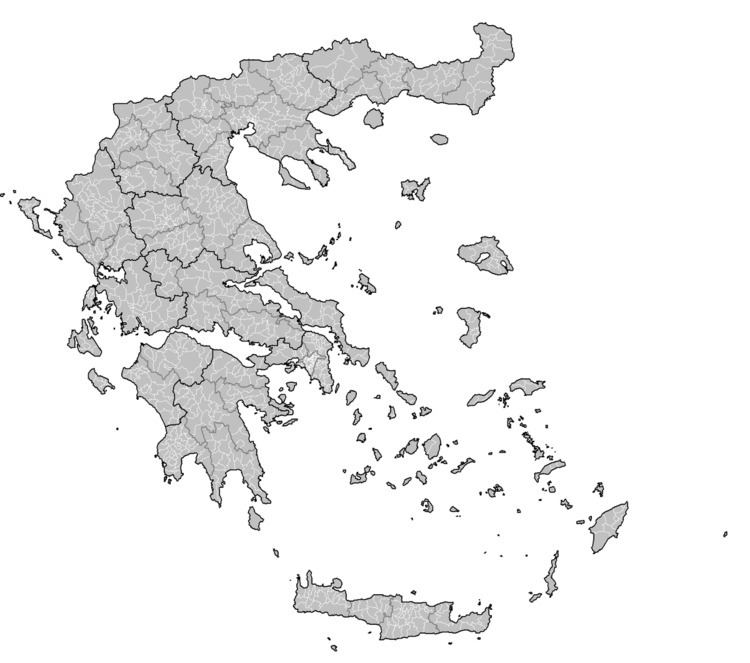 | ||
Kapodistrias reform (Greek: Σχέδιο Καποδίστριας, "Kapodistrias Plan") is the common name of law 2539 of Greece, which reorganised the country's administrative divisions. The law, named after 19th-century Greek statesman Ioannis Kapodistrias, passed the Hellenic Parliament in 1997, and was implemented in 1998. The administrative system was changed again at the 2010 Kallikratis reform.
Municipalities and communities
Before and after the Kapodistrias reform, the difference between municipalities (δήμοι) and communities (κοινότητες) was merely a matter of size. Municipalities were larger and had a more urban character than communities, which were as small as a single village. The reform reduced the number of municipalities and communities sharply: from 5775 (441 municipalities and 5382 communities) to 1033 (900 municipalities and 133 communities).
Municipalities and communities varied in population from 745,514 (Athens) to 28 (Gramos, in Kastoria Prefecture) with an average of 10,603.5 and a median of only 4,661.5 (2001 census "real" population, including Agion Oros as one of the municipalities). The following chart illustrates the range:
Municipalities and communities varied in land area from 873.552 km² (Kato Nevrokopi in Drama Prefecture) to 0.800 km² (Nea Chalkidona in Athens Prefecture), with an average of 127.618 km² and a median of 105.669 km².
